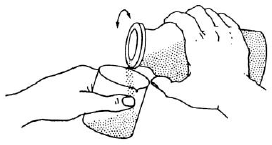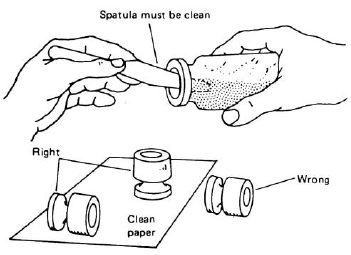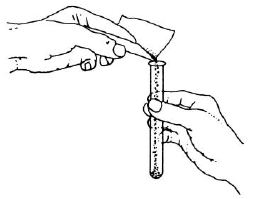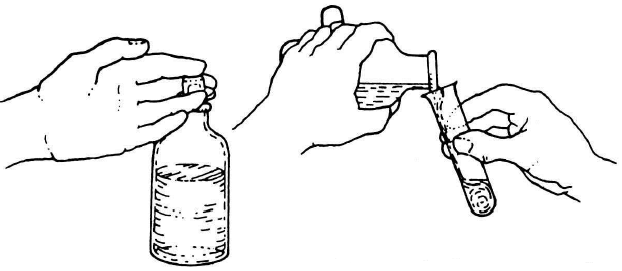How To Transfer Chemicals
Solids

Figure 1: The transfer of a large amount of solid.

Figure 2: The transfer of a small amount of solid.

Figure 3: Using a piece of weighing paper to transfer a solid.
Liquid Transfer
Take an appropriately sized, labeled beaker to the reagent shelf. The stopper of the reagent bottle should be held during transfer or, if it is flat, placed upside down on the counter. Carefully pour the amount of reagent that you will need, not extra, into the beaker and then close the reagent bottle. Graduated cylinders are unstable so transfer liquids into the labeled beaker first and then pour from the beaker into your graduated cylinder. It is a good idea to make this latter transfer over a sink.
Figure 4: Pouring a liquid or a solution from a glass-stoppered bottle.
